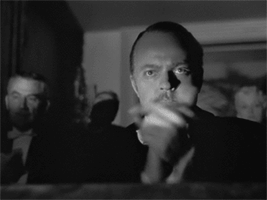I’ve had some time to play this again and am now at the end game, so here’s my remaining thoughts on it squeezed next to my initial impressions.
Turns out I backed the kickstarter so I’ve been playing this to see what the result is. Here's my impressions so far.
...
All in all, I’m not sure whether I’m going to continue playing or wait for some mods to fix some of the grind. I’m still sort of having fun with my current teams smacking bosses, but the combat has gotten stale quickly and it doesn’t look like the game has any other tricks up its sleeve. Overall, I’d say the biggest problem the game has so far is that it wants to create an oppressive atmosphere where your characters are replaceable and can die at anytime, while heavily punishing the player for actually losing any by requiring them to heavily invest their time into grinding. I’d be disappointed but able to accept it if the game was just a really stylish dungeon crawler to be finished in an afternoon, but the current game is severely hamstrung by its lack of decent pacing and how it relying so heavily on its combat keeping you interested when it lacks the depth needed to do so.
Difficulty doesn’t meaningfully change between the start of the game and the end. End game opponents have higher stats, but not in a way that’ll require adjusting your tactics. They mostly take a few more hits or hurt your troops a bit more when you get a ‘get fucked’ seed for an encounter, but no more than that - you won’t lose anyone if your team is properly built.
Game feels more like a manager game set in a medieval setting with turn-based combat than an RPG. Consequently, the developers’d do well to learn from those games and enhance their UI with some much needed statistics. Tell me what my heroes’ killcount is and what they killed, how often they reached death’s door and in what dungeons, what their average stress level is when entering and leaving dungeons, how often they were afflicted, how often they were virtuous, what teams they were in, how many dungeon runs they have completed, how much loot they have brought home, what trinkets I usually give them, what skills they used most frequently, etcetera. It’s not that I even need that info to play well, but that it would have made the different heroes feel more like individuals with their own play history, rather than how they are currently so interchangeable that the one unintentional death I had was nothing but n annoyance and didn’t bother me at all.
Character UI for the townscreen needs to be worked on in general, because it feels clunky and does not mesh well with maintaining a large roster of heroes. Rather than easily letting you sort heroes, set up teams and compare the stats of different characters, it’s a squashed together list where moving the portraits quickly becomes a hassle when they’re not already close to each other. Additionally, this means that ruthlessly dissecting which heroes are performing inadequately, like the game encourages, takes much effort than it should. You also can’t set up teams for your own ease of use, which makes the weakness of the drag and drop system stand out further and gets in the way of smooth preparations. The only visual indication any sort of party gets is when heroes that went on the most recent run get a mark, but there is otherwise no way to set up a party in an easily distinguishable way. This doesn’t mean that is impossible to get these things done anyway, but it does make it take more clicks than needed to fulfil a basic need of the player.
Also, minor quibble, but it gets annoying how you can’t always click away character barks and how long they’ll hover around, because it kills the pace. This gets especially grating when a hero has a curiosity related quirk activate, as those take a long time to resolve.
The constant reusing of bosses blunts any sense of progress. They should either have had one boss per difficulty for every dungeon (four new bosses) or two (sixteen new bosses), with more difficult versions of those you’d previously beaten as bonus bosses. That would also alleviate the grindy feeling of the mid and end game, since you’re not just building your party’s towards taking on the Darkest Dungeon, but also fighting meaningfully new encounters.
Another factor that worsens the tedium is how stress, quirks, virtues, and afflictions don’t meaningfully move beyond being situational buffs or debuffs, so character building isn’t fun either and you end up having nothing to tinker with by the mid game as you’ll have seen all the characters’ tricks. They are too easily gained, too easily lost and never lead to a hero developing some sort of identity. As a result, it doesn’t feel like you’re managing the mental state of your characters, but are healing a second healthbar that has somewhat different requirements.
Additionally, the sense of accomplishment that you’re supposed to get from getting loot is absent because of how heavily loot is subject to inflation. An average haul is about enough to upgrade one hero by one grade from start to finish, because as the rewards increase so too do the costs of upgrades and you never get suitably large windfalls even with bosses. This pattern isn’t abnormal by itself, but because the game is so heavily focused on doing constant dungeon runs that don’t vary all that much tedium sets in. It makes it feel like a free to play game with the microtransactions taken out.
Furthermore, the quirks and diseases are assigned so randomly that they feel disconnected from whatever run you just did. What you did or how you did it doesn’t seem to matter, resulting in there being no build up for the reveal of what quirks you get - you are only waiting to see if you’re going to get randomly punished or rewarded. Again, this makes it so finishing becomes dull faster than it should.
Music is meh, with not a single memorable track thus far and sometimes actively harming my enjoyment. I had one moment where the music for the townscreen ended and all that was left were the ambient noises, and I ended up liking it much better that way. It made the town much more atmospheric by making your stay there feel akin to a lull before the storm, but then the music came back and we were back to generic tunes. Sound effects are used appropriately, though: hinge noises, combat hits, torches being lit, and so on. Narrator also stays good throughout the game
It still looks great, though. This is not just in terms of their art style setting up the atmosphere, but how they succeed at making the gameplay more enjoyable through relatively simple visual effects. Rather than having expensive full-on animation that usually takes too long and of which the player will quickly get tired (HBS Shadowrun games) they use short bursts of zoom coupled with animation frames that convey the intended action to tell the player what’s happening. The result is that blows in combat feel impactful before you factor in the damage dealt. Usually an attack or interaction animation gets filtered out by the player and they focus solely on the result they get from the action, leading on the game having to rely on its mechanics to engage the player, but this is a great example of how making basic actions visually fun to execute can enhance the gameplay.
In the end, it’s a game with strong presentation that makes for a fun start but it's lacking in pacing and mechanical depth, which results in a weak middle point and end. I think it’s an interesting little thing in terms of what it could have been, but I don’t see myself playing it much again until bits of that potential get realised somehow.








 /
/![The Year of Incline [2014] Codex 2014](/forums/smiles/campaign_tags/campaign_incline2014.png)

































